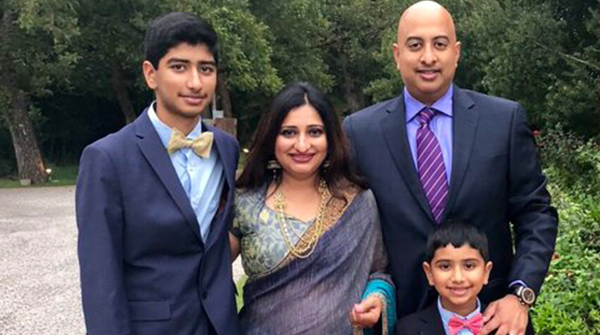Of Mice and Monarchs

Sara Weinstein, Postdoctoral Researcher
Monarch butterflies possess a potent chemical armor. As caterpillars, they eat plants filled with toxic cardenolides that build up in their bodies and make them unpalatable to most—but not all—predators. In central Mexico, where the largest winter monarch aggregations occur, scientists observed that rodents attack monarchs that fall to the ground. In particular, the black-eared mouse (Peromyscus melanotis) specializes in these bitter-tasting insects, eating as many as 40 per night.
In a new study, University of Utah biologists found that mice at California monarch overwintering sites can also consume monarch butterflies. Working at one of the largest monarch aggregations outside of Mexico, Pismo State Beach Monarch Butterfly Grove, the researchers discovered that the western harvest mouse (Reithrodontomys megalotis) also ate the grounded monarchs. However, with the precipitous decline in western monarch populations, this butterfly buffet may be in jeopardy.

A harvest mouse munching on a monarch.
The authors do not think that rodents are contributing to the western monarch decline, nor that the monarchs are the only thing that mice can eat. Rather, documenting this new feeding behavior is a reminder of how little we know about the interactions that may be lost as insect populations decline.
“We are in an insect apocalypse right now. There are estimates that 40% of studied invertebrate species are threatened and that over 70% of flying insect biomass is already gone. This is devastating on its own and is also going to have enormous impacts on the other organisms that feed on insects,” said Sara Weinstein, the postdoctoral researcher who led the study.
“Western monarchs and other western butterflies need conservation attention and part of that awareness-raising is illuminating the many ways these animals are interconnected to other insects, birds, mammals, as well as our human communities. This study helps us appreciate more deeply how fewer butterflies means less food for other native animals” said Emma Pelton, senior conservation biologist at the Xerces Society.

Weinstein with a lab-reared monarch.
The study published in the journal Ecology on Dec. 12, 2021.
To study mouse-monarch interactions, the researchers first trapped rodents in the grove in February 2020. The rodents were released, but their feces were kept to screen for monarch DNA—which they found in one sample. This first survey occurred in late winter as monarchs were leaving the aggregation and few remained for mice to munch. Weinstein and colleagues intended to return the following fall during peak monarch season. However, after years of decline, the western monarch population crashed.
“At a site where 100,000 butterflies used to roost, in 2020 there where were fewer than 200 monarchs. So, we had to change tactics,” Weinstein said. “We tested whether rodents would feed on the butterflies using captive-reared monarchs.”
Weinstein set up lab-reared monarch carcasses under camera traps and captured footage of wild harvest mice eating butterflies. She also caught a half dozen mice and offered them monarchs. The mice ate monarchs, typically favoring the abdomen or thorax, high-calorie parts with fewer toxins.
“Many rodent species are likely to have some resistance to cardenolides in monarchs, due to genetic changes at the site where these toxins bind,” said Weinstein. “The Pismo Grove is one of hundreds of western monarch aggregation sites, and it seems likely that, at least in the past, rodents throughout the western monarch range may have supplemented their winter diets with monarchs. If you can handle the cardenolides in a monarch, their bodies are full of fat and offer a pretty good meal.”

Mouse eating an entire monarch butterfly.
This meal will be a lot harder to find, as over 90% of western monarchs have disappeared in the last 40 years. The missing beauties will surely impact the ecosystem that depends on them for food.
Denise Dearing, Distinguished Professor at the U, was senior author of the study. Photos and animations by Sara Weinstein.
Find the study, “Harvest mice (Reithrodontomys megalotis) consume monarch butterflies (Danaus plexippus), in the journal Ecology: https://doi.org/10.1002/ecy.3607
>> BACK <<
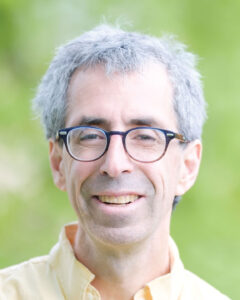
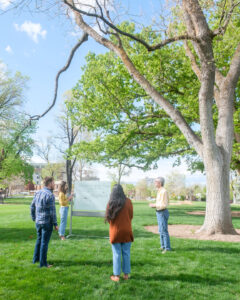
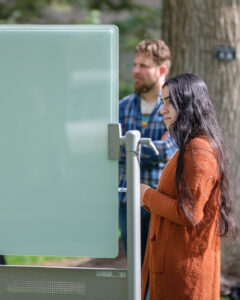







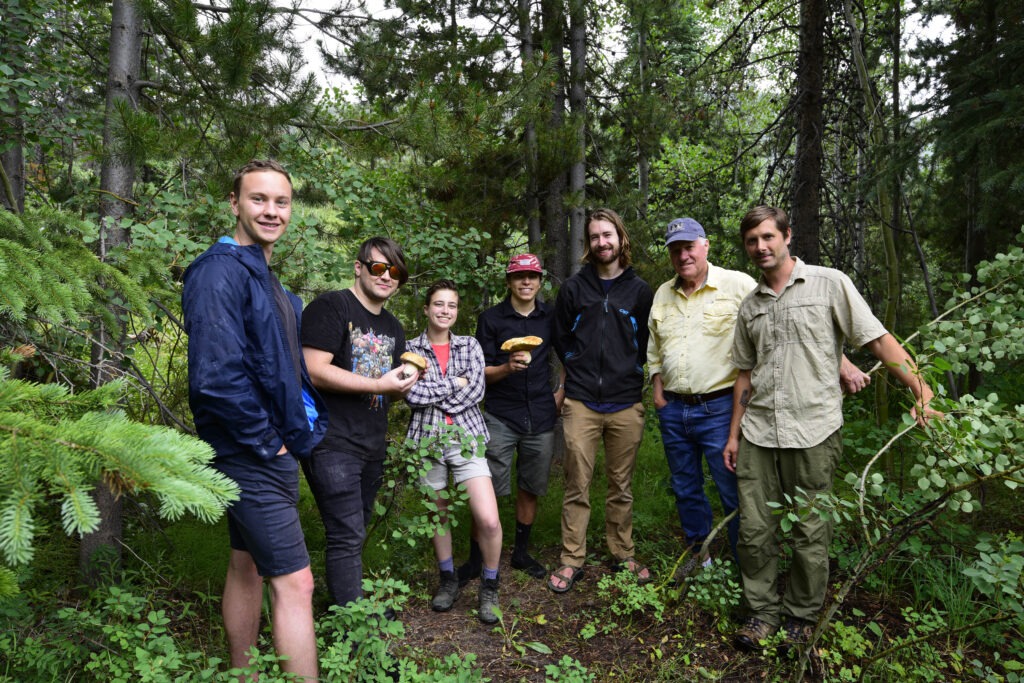



 “We’re the only non-profit that has taken on such a big program like this. Some of these tribal communities are in rural areas—resources are scarce,” said Meredith Little Lam, project and program manager at AIS and AIS scholarship alumnus. “The whole point of AIS PREP is that we want to make sure we give our Native American students STEM resources that will allow them to succeed in high school.”
“We’re the only non-profit that has taken on such a big program like this. Some of these tribal communities are in rural areas—resources are scarce,” said Meredith Little Lam, project and program manager at AIS and AIS scholarship alumnus. “The whole point of AIS PREP is that we want to make sure we give our Native American students STEM resources that will allow them to succeed in high school.” “These students come from some of the poorest reservations in the United States. This really is a trip of a lifetime for them,” said Little Lam, “Some come from areas where there’s no running water, no electricity. We live in the United States and it’s just appalling that we can’t figure out ways to help these communities. And so, I think that this is a proactive way of getting these students involved in STEM to let them know, ‘You can change your tribal communities. You have it within yourself to be that leader.’”
“These students come from some of the poorest reservations in the United States. This really is a trip of a lifetime for them,” said Little Lam, “Some come from areas where there’s no running water, no electricity. We live in the United States and it’s just appalling that we can’t figure out ways to help these communities. And so, I think that this is a proactive way of getting these students involved in STEM to let them know, ‘You can change your tribal communities. You have it within yourself to be that leader.’”
 Stolley spoke to the students about attending Fort Lewis College, a university in Colorado that offers free tuition to Native American students. He received a doctoral degree in organic chemistry from the U and was a postdoctoral research assistant at the Pacific Northwest National Laboratory. He returned to Salt Lake City as a research assistant professor first in the Department of Chemistry and now in the College of Science, as well as part owner of a local chemical company.
Stolley spoke to the students about attending Fort Lewis College, a university in Colorado that offers free tuition to Native American students. He received a doctoral degree in organic chemistry from the U and was a postdoctoral research assistant at the Pacific Northwest National Laboratory. He returned to Salt Lake City as a research assistant professor first in the Department of Chemistry and now in the College of Science, as well as part owner of a local chemical company. This is the first year that AIS invited a keynote speaker to address the students during their program completion celebration. For Little Lam, Alice Min Soo Chun was the perfect choice. Chun, founder and CEO of Solight Designs, Inc. invented the Solar Puff, a portable, collapsible, self-inflating light powered by the sun. Little Lam met Chun while at Navajo Strong, through which Chun donated Solar Puff lights to families on the Navajo Nation without access to electricity.
This is the first year that AIS invited a keynote speaker to address the students during their program completion celebration. For Little Lam, Alice Min Soo Chun was the perfect choice. Chun, founder and CEO of Solight Designs, Inc. invented the Solar Puff, a portable, collapsible, self-inflating light powered by the sun. Little Lam met Chun while at Navajo Strong, through which Chun donated Solar Puff lights to families on the Navajo Nation without access to electricity.


 been a galactic trip. For this reason he is quick to remind up-and-coming biologists at the U that education is not, and should never have been, about getting a job. “If you really contemplate the principles you are learning and integrate them into your life, it will change you and the way you think. To me, that is worth so much more than what type of job your degree can get you.”
been a galactic trip. For this reason he is quick to remind up-and-coming biologists at the U that education is not, and should never have been, about getting a job. “If you really contemplate the principles you are learning and integrate them into your life, it will change you and the way you think. To me, that is worth so much more than what type of job your degree can get you.”